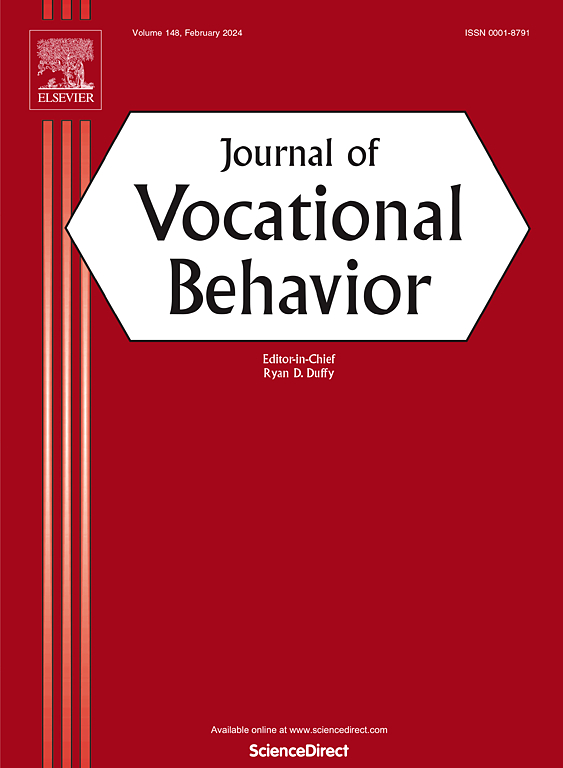Not all distance is alike: revisiting the associations between physical and perceived proximity in multilocational work
IF 5.2
1区 心理学
Q1 PSYCHOLOGY, APPLIED
引用次数: 0
Abstract
The relation between distance and perceived proximity within multilocational work has been subject to mixed empirical support. The massive shift toward remote work and technology-mediated communication gives renewed urgency to the need to understand the association between distance and proximity. This study utilizes multi-sourced two-wave data to examine different conceptualizations of distance and its consequential effects on perceived proximity through communication, work practices, and worker engagement. The findings suggest that configural dispersion (i.e., the percentage of dispersed colleagues) may be a more meaningful predictor of work experiences and practices than time distance (i.e., time zone differences between colleagues) and physical distance (i.e., miles apart). The findings also challenge the theorized reciprocal association between perceived proximity and communicative behaviors, suggesting perceived proximity is a distal outcome of, rather than an antecedent to, communication and engagement. The findings underscore the role of engagement and social communication in enhancing perceived proximity. In contrast, task-related communication and supplemental work practices deter perceptions of proximity to others. This investigation not only updates existing knowledge but also contributes a more comprehensive understanding of the spatial and temporal demands in multilocational work settings.
并不是所有的距离都是一样的:重新审视在多地点工作中物理距离和感知距离之间的联系
在多地点工作中,距离和感知接近之间的关系受到混合经验支持。向远程工作和以技术为媒介的通信的巨大转变,使人们再次迫切需要了解距离和接近之间的关系。本研究利用多来源的两波数据来检验距离的不同概念及其通过沟通、工作实践和员工敬业度对感知接近度的相应影响。研究结果表明,相对于时间距离(即同事之间的时区差异)和物理距离(即相隔几英里),结构分散(即分散的同事的百分比)可能是更有意义的工作经验和实践预测指标。研究结果还挑战了感知接近和沟通行为之间的理论相互关联,表明感知接近是沟通和参与的远端结果,而不是先决条件。研究结果强调了参与和社会沟通在增强感知亲近度方面的作用。相反,与任务相关的沟通和补充工作实践会阻碍与他人亲近的感觉。这项调查不仅更新了现有的知识,而且有助于更全面地了解多地点工作环境中的空间和时间需求。
本文章由计算机程序翻译,如有差异,请以英文原文为准。
求助全文
约1分钟内获得全文
求助全文
来源期刊

Journal of Vocational Behavior
PSYCHOLOGY, APPLIED-
CiteScore
13.10
自引率
5.40%
发文量
85
期刊介绍:
The Journal of Vocational Behavior publishes original empirical and theoretical articles offering unique insights into the realms of career choice, career development, and work adjustment across the lifespan. These contributions are not only valuable for academic exploration but also find applications in counseling and career development programs across diverse sectors such as colleges, universities, business, industry, government, and the military.
The primary focus of the journal centers on individual decision-making regarding work and careers, prioritizing investigations into personal career choices rather than organizational or employer-level variables. Example topics encompass a broad range, from initial career choices (e.g., choice of major, initial work or organization selection, organizational attraction) to the development of a career, work transitions, work-family management, and attitudes within the workplace (such as work commitment, multiple role management, and turnover).
 求助内容:
求助内容: 应助结果提醒方式:
应助结果提醒方式:


